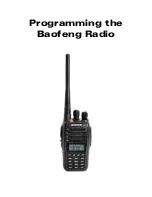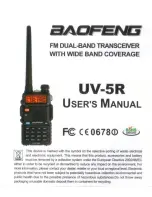
— 4 —
NORMAL OPERATION
The RECEIVER receives 433 MHz radio signals from numerous STI sensors enrolled to the RECEIVER. It provides feedback in
the form of LED colors, onboard sounder annunciation, onboard sounder siren, switched on or off output terminals (Form C
contacts), a 3 second 12 VDC @ 75mA max. output on the triggered output plug and 12 VDC output terminals powered at the
same time as the onboard sounder.
LED Operation:
The LED status with higher importance is emitted by the LED. The LED importance is as follows (highest to lowest):
Red LED
- Zone enrolled, Alert status
Flashing Red LED - Zone enrolled, Latched and Non-Triggered status
Amber LED
- Zone enrolled, Tamper Alert and Non-Triggered status
Green LED
- Zone enrolled, Normal and Non-Triggered status
LED OFF
- Zone not enrolled
Onboard Sounder Operation:
Siren Mode
– SW4 and SW5 (settings)
The onboard speaker gives a 4 KHz @ 90dB sound for the SIREN TIME set by SW4 and SW5 when any zone’s alert signal is
received (see
Component Descriptions for siren times
).
NOTE:
Chime/Beep mode must be turned off, (SW6 OFF), for the siren mode to activate.
Chime/Beep Mode
– (SW6 ON)
The onboard speaker gives a double beep when any zone’s alert signal is received. Chime/Beep mode overrides the siren mode.
Sensor Operation:
A SENSOR sends a 433 MHz radio signal to the RECEIVER that will indicate one or more of the following: Alert triggered;
restored to normal; sensor tampering; low battery; lost signal.
Adapter Plug Input
- Input connector 12VDC, 500mA, center positive adapter (provided).
Triggered Output Plug (75mA)
- 12VDC output connector. Activates with 12VDC, 75mA for 3 seconds when any zone
is triggered. Designed for use with STI Lamp Controller (STI-30104 sold separately).
Form C Switch Outputs (Dry Contacts)
N.O.
- Normally open circuit to COM terminal. Closed to COM when alarm is triggered.
COM
- Common return between N.O. or N.C.
N.C.
- Normally closed circuit to COM terminal. Open to COM when alarm is triggered.
When any zone has an alert signal received and the LED changes to continuous RED, a short circuit is made between the NO
and COM, and an open circuit is made between NC and COM. As soon as ALL zones are not in alert mode and the LED is no
longer continuous RED, an open circuit is made between NO and COM, and a short circuit is made between NC and COM.
12VDC Input (500mA)
+12VDC
- Positive voltage input. Power input circuit rated to 500mA current.
-12VDC
- Negative voltage input.
The 12VDC input terminals allow the RECEIVER to be powered from an external 12VDC, 500mA rated power source.
12VDC Output (300mA)
+12VDC
- Positive output voltage. 300mA maximum output current.
-12VDC
- Negative output voltage.
A continuous 12VDC output is produced only while sounder is activated. The 12VDC output terminals will turn on at the same
time as the onboard sounder in siren mode or chime mode.
COMPONENT DESCRIPTIONS (Bottom Side):


























